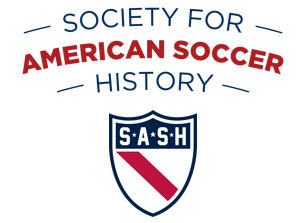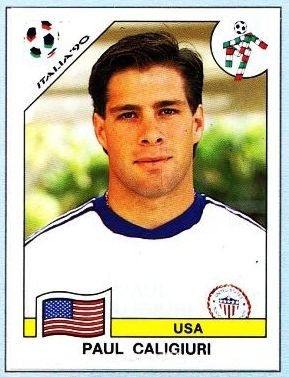Not everyone who was a fan of American soccer in the 1980s remembers Paul Caligiuri’s goal that gave the United States a 1-0 win over Trinidad. However, Michael Maurice, the Trinidadian goalkeeper, certainly remembers it, as do the fans who saw it in Torrance, Calif.
What’s that? California? Wasn’t that game in Trinidad? Nope. We aren’t talking about the famous 1989 goal in Trinidad that lifted the United States into the 1990 World Cup. Caligiuri’s biggest goal wasn’t the first game winner that he’d scored against Trinidad and Maurice. He’d also had one four years earlier, on May 19, 1985.
As was the case in 1989, the 1985 game was a World Cup qualifier. It was part of a round-robin series against Trinidad and Costa Rica that ultimately led to the United States’ elimination. The goal came in the 15th minute of the game. Gregg Thompson took a short corner on the right, hitting it to Perry Van der Beck. Van der Beck crossed the ball into the penalty area, where Caligiuri escaped the defense long enough to head the ball past Maurice. By 1989, Caligiuri had several seasons of playing in the second division in West Germany under his belt, but in 1985 he was still a collegian, who later that year captained UCLA to the NCAA championship.
To be honest, my headline on this post is a play on something I don’t really agree with, the frequent references to Caligiuri’s 1989 goal as “the shot heard ’round the world.” To my mind, that name was already spoken for by Joe Gaetjens’ goal against England in the 1950 World Cup (in soccer, that is; elsewhere, it’s been spoken for since 1775). And while Caligiuri’s goal certainly has had vastly greater lasting impact on American soccer than Gaetjens’ goal, and marks the most important turning point in American soccer history, the toppling of mighty England in 1950 was heard ’round the world a lot more loudly than the outcome of a game between two CONCACAF teams in 1989.
Caligiuri is not the only American national-team star to have scored a goal that foreshadowed his most famous one.
Tab Ramos is well known for the cannon-shot of a goal that gave the United States a 1-0 victory over Costa Rica in a World Cup qualifier in 1997 in Portland. That he had done somewhat the same thing eight years before is less well known.
As with his 80th-minute goal in Portland, Ramos’ goal against Costa Rica in 1989 in Fenton, Mo., came in a game in which the United States was in danger of being held to a home tie that it didn’t want. Costa Rica had beaten the Americans two weeks before in Costa Rica, and on April 30, 1989 it had held the game scoreless for more than an hour before Ramos finally broke through in the 72nd minute. John Stollmeyer lobbed a ball from midfield into the penalty area, and it was headed out to the feet of an unmarked Ramos, whose volley skipped in from about 20 yards out.
Ramos’ goal in April 1989 joins Caligiuri’s famous one seven months later as keys to the United States’ qualification for its first World Cup in 40 years. Another crucial one in that same qualifying series is a member of the short list of goals that players have scored for the United States against the countries where they were born. On Sept. 17, 1989, Hugo Perez, a native of El Salvador, scored the only goal of the United States’ 1-0 victory over El Salvador in a World Cup qualifier. In the 62nd minute, Salvadoran goalkeeper Carlos Riviera saved both John Harkes’ free kick and Peter Vermes’ shot on the rebound, but he couldn’t stop Perez’ header on the second rebound.
A version of this post originally appeared on Roger’s Big Soccer blog on May 11, 2011.

